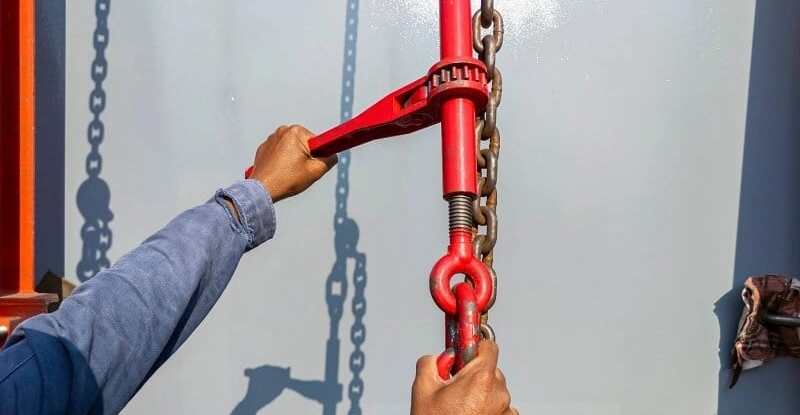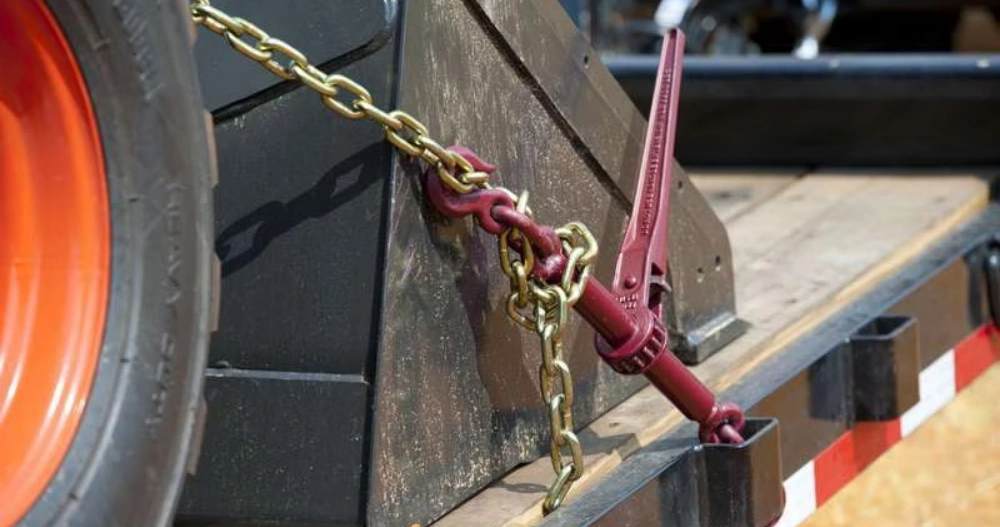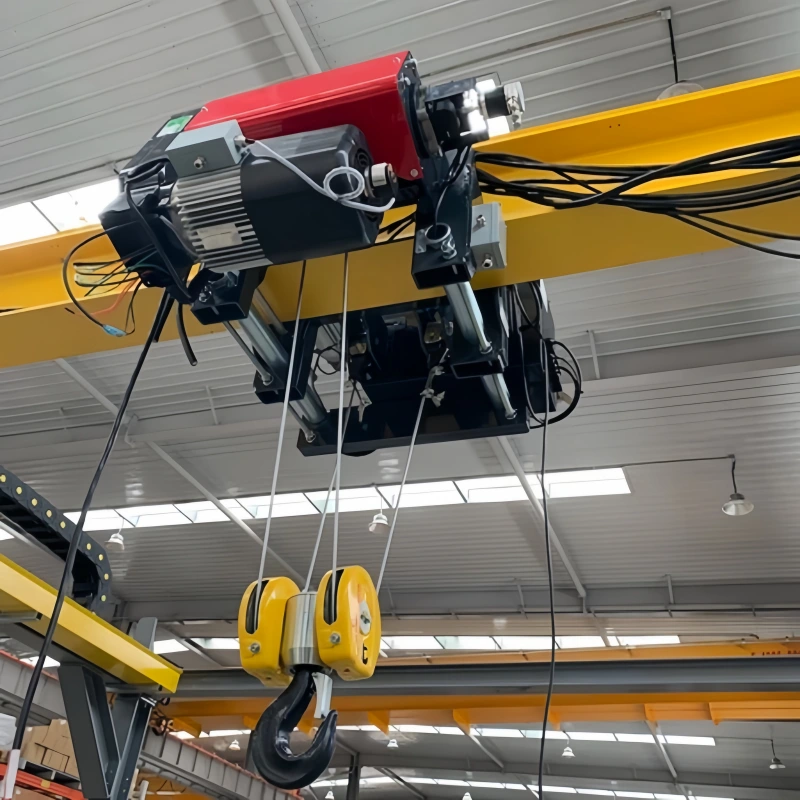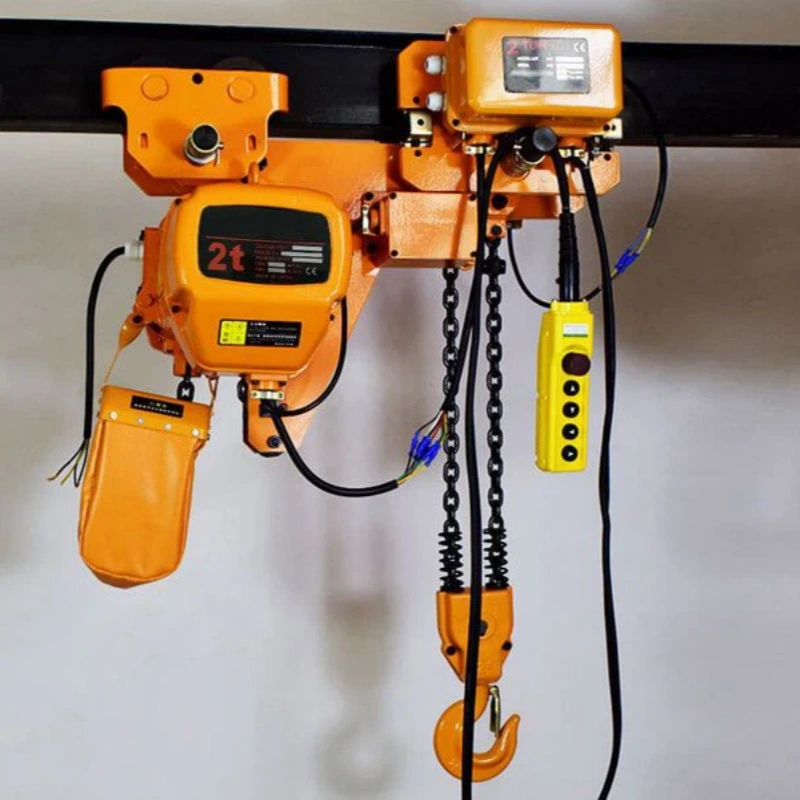You rely on chain binders to keep heavy loads secure during transit. These tools lock down cargo, helping you meet strict cargo securement standards set by authorities across the United States, Canada, and Europe.
For example, the Federal Motor Carrier Safety Regulations in the U.S. and EUMOS 40509 in Europe require tested, certified systems that prevent loads from shifting or spilling. Using the right binder keeps you, your cargo, and everyone on the road safe.
Region | Regulatory Body/Standard | Key Requirements |
|---|---|---|
United States | DOT, FMCSA | Federal Motor Carrier Safety Regulations section 393; securement for all cargo types |
Canada | CCMTA | Minimum requirements for tie-downs and weight limits |
European Union | EU (varies by country), EUMOS 40509 | Certified stability; country-specific tie-down minimums |
Key Takeaways
Chain binders are essential for securing heavy loads during transport, ensuring safety and compliance with regulations.
Choose between lever binders for quick securing and ratchet binders for precise tension control based on your cargo needs.
Always inspect your chain binders before use to prevent accidents and ensure they meet safety standards.
Select the right binder size and grade to match your cargo’s weight and type for effective securement.
Use protective gear and follow safety guidelines when operating chain binders to avoid injuries.
Chain Binders Overview
What Is a Chain Binder?

You use chain binders, also known as load binders, to secure cargo by tightening chains around it. These devices play a vital role in cargo securement, especially when you transport heavy or uneven loads.
Chain binders come in two main types: ratchet binders, which use a ratcheting mechanism for controlled tension, and lever binders, which offer quick operation with more manual force.
Each binder features a tension hook on both ends and a handle that lets you apply the necessary tension. This design ensures your cargo stays firmly in place throughout the journey.
Why Chain Binders Matter?
Chain binders serve as essential tools in the transportation industry. You rely on them for several reasons:
They secure heavy loads during transit.
They work best for rigid, heavy, or uneven cargo that needs focused tie-down pressure.
Chains do not stretch, so you minimize load shift and keep your cargo stable.
You often use them to transport large machinery, steel beams, pipes, logs, and agricultural equipment.
LOAD BINDING SYSTEMS STORE ENERGY THAT CAN RELEASE SUDDENLY, CAUSING SERIOUS INJURY OR DEATH. STAY CLEAR OF BINDER, AS IT MAY SUDDENLY RELEASE WITH FORCE. FAILURE TO COMPLY WITH THIS WARNING MAY RESULT IN SERIOUS INJURY, DEATH, OR CARGO DAMAGE.
You must always follow safety guidelines when using chain binders. Proper use helps you avoid accidents and ensures compliance with FMCSA and other international cargo securement regulations.
Powerful Machinery’s Commitment
Powerful Machinery stands out as a trusted provider of certified, high-performance chain binders.
You benefit from products that meet or exceed major international standards, including ISO9001, TUV Rheinland, OSHA, and ASTM. The company offers a wide range of solutions, from high-tensile Grade 80 and Grade 100 chains to custom-engineered options for unique lifting needs.
Feature | Details |
|---|---|
Certifications | ISO9001, ISO14001, TUV Rheinland, EURO CERT, EAC, Geprüfte Sicherheit, OSHA, ASTM, China Classification Society, Korean Register |
Product Range | Grade 80 & 100 chains, custom solutions |
Performance Focus | Products meet diverse application requirements |
You can trust Powerful Machinery to deliver reliable, FMCSA-compliant load binder solutions for your most demanding cargo securement challenges.
Types of Chain Binders

When you secure cargo, you need to understand the main types of chain binders available. Each type offers unique advantages for different cargo securement scenarios. Powerful Machinery provides a full range of options, ensuring you always have the right tool for the job.
Lever Load Binder
You often choose the lever load binder for its speed and simplicity. This type uses a solid steel lever with hooks on both ends. When you pull the lever, you tighten the chain and secure your load. The mechanical advantage of the lever allows you to apply significant tension with less effort.
Feature | Description |
|---|---|
Mechanical Advantage | The lever lets you apply greater tension with less effort. |
Design | Solid steel lever with hooks at each end. |
Function | Pulling the lever tightens the chain and secures the cargo. |
You find lever binders effective for quick load securing, especially in short-haul situations. The straightforward mechanism ensures ease of use, even in demanding environments. You can rely on this type for cargo tying in logistics, transport, and construction industries.
Lever binders are generally more economical than other types, making them a popular choice for many operators.
The lever load binder is designed for maximum tension with minimal effort.
It is indispensable for securing heavy cargo by tightening chains around the load.
The simple design makes it easy to operate and maintain.
Powerful Machinery manufactures lever binders with high-strength steel and corrosion-resistant coatings. You benefit from robust construction and reliable performance, even in harsh conditions.
Ratchet Load Binder
You turn to the ratchet load binder when you need precise tension control and enhanced safety. This type uses a ratcheting mechanism that allows you to incrementally tighten the chain. The handle moves back and forth, engaging internal gears to gradually increase tension.
Ratchet load binders offer precise tension control, which is essential for securing delicate or fragile cargo.
The ratchet mechanism allows for incremental adjustments, making it easier to manage uneven or irregular loads.
You achieve higher tension levels than with lever binders, which is crucial for maintaining cargo integrity during transport.
Ratchet binders often include safety features like locking mechanisms to prevent accidental release.
These binders are considered safer due to reduced built-up tension, minimizing the risk of the bar snapping back.
You use ratchet binders in commercial transportation to secure heavy cargo. They provide the strength needed to hold loads in place and are commonly used to ensure safe delivery from one location to another.
Powerful Machinery’s ratchet binders feature ergonomic handles and durable gears, giving you smooth operation and long-lasting reliability.
Comparison
You need to compare the types of chain binders to select the best option for your application. The table below highlights the key differences between ratchet binders and lever binders:
Feature | Ratchet Binders | Lever Binders |
|---|---|---|
Safety | Increased safety due to the locking mechanism | Higher risk of injury due to the potential snap back |
Efficiency | Slower to use, but allows precise adjustments | Fast operation but requires more physical strength |
User Preference | Favored for long-distance transport and safety | Preferred for quick load securing in short-haul |
Physical Effort | Requires less physical effort | Requires more physical strength |
Control | Better control for securing sensitive loads | Less control over tension adjustments |
Weight | Heavier and bulkier due to the internal gear system | Lightweight and compact |
Ratchet binders are ideal for long-haul transportation and securing oversized or sensitive cargo. You benefit from better control and increased safety, especially when handling valuable or fragile loads.
Lever binders work best for quick load securing in short-haul situations. You save time with their fast operation, but you need to use more physical strength.
You also need to consider cost. Lever binders are generally more economical, making them suitable for operations where budget is a concern. Ratchet binders, while more expensive, provide superior safety and control.
Powerful Machinery offers both types of chain binders, each engineered for maximum durability and performance. You can choose from a wide variety of sizes and configurations to match your specific cargo securement needs.
Every load binder from Powerful Machinery meets or exceeds international safety standards, giving you peace of mind on every haul.
Tip: Always select the type of chain binder that matches your cargo, route, and safety requirements. The right choice ensures secure transport and compliance with industry regulations.
Other Types of Binders
You may encounter several types of binders beyond the standard lever and ratchet styles. These alternatives play important roles in specific load securing equipment applications, especially when you need to protect delicate surfaces or handle lighter cargo.
Understanding these options helps you select the right tool for every job.
Strap Binders
Strap binders, often called ratchet straps, use strong webbing instead of chains. You secure loads by tightening the strap with a ratcheting mechanism. This method works well for lighter cargo and items with finished surfaces.
Strap binders absorb shocks and vibrations, reducing the risk of damage during transit. They also offer flexibility when you need to secure oddly shaped items.
Feature/Use Case | Binder Chains | Ratchet Straps |
|---|---|---|
Strength and Durability | High strength, suitable for heavy-duty applications | Generally, lower working load limits |
Ideal Use Cases | Machinery transport, logging,and construction equipment | Securing lighter loads, recreational equipment |
Environmental Resistance | Less prone to damage from abrasive surfaces | More flexible, absorbs shocks and vibrations |
Surface Compatibility | Can damage finished surfaces | Safer for items with finished surfaces |
You often choose strap binders for recreational equipment, furniture, or appliances. They serve as a valuable addition to your load securing equipment toolkit.
Cam Buckle Binders
Cam buckle binders use a spring-loaded cam mechanism to hold the strap in place. You pull the strap tight by hand, and the cam locks it. This type works best for light-duty applications where you need quick adjustments. Cam buckle binders use polyester or nylon webbing, which provides durability and resistance to weather.
1-inch cam buckle straps support working loads from 183 lbs to 500 lbs.
2-inch straps handle up to 1,000 lbs.
Webbing materials like polyester offer breaking strengths from 1,500 lbs to 6,600 lbs.
You use cam buckle binders for securing boxes, pallets, or small equipment. They offer a simple, fast solution for many types of binders in warehouse and delivery settings.
Over-Center Binders
Over-center binders use a lever that snaps over center to lock the chain or strap in place. You gain a quick and secure hold with minimal effort. This type is popular for applications where you need to release or tighten the binder frequently.
Over-center binders work well for moderate loads and provide a compact, easy-to-use option.
Note: While these types of binders serve important roles, you should rely on heavy-duty chain binders or load binders for demanding applications. Powerful Machinery specializes in robust solutions designed for high-strength, critical cargo securement.
You can trust their products when you need maximum reliability from your load securing equipment.
Selecting a Chain Binder

Selection Factors
Choosing the right chain binder starts with understanding your cargo and environment. You must consider several factors to ensure both safety and efficiency. The table below outlines the key points:
Factor | Description |
|---|---|
Load Weight and Type | Match the binder’s working load limit to the chain and cargo weight. |
Chain Size and Grade | Select the correct size and grade for your application. |
Application | Use ratchet binders for heavy or safety-critical loads; lever binders for lighter, faster jobs. |
Environment | Opt for forged steel for durability; choose coated options for corrosion resistance. |
Operator Experience | Ratchet binders are safer and easier for less experienced users. |
You should always assess your transport environment. Extreme temperatures and humidity can affect the performance of your equipment. In regions with high heat or frequent rain, corrosion-resistant coatings help maintain reliability.
Sizing and Grades
Proper sizing ensures your load binder works safely. You need to match the chain binder to the chain size and grade. The table below shows common configurations:
Chain Size | Minimum Breaking Strength (MBS) | Example Configuration |
|---|---|---|
5/16″ – 3/8″ | Varies by binder | 3/8″ x 20′ (MBS: 26,400 lbs) |
3/8″ – 1/2″ | Varies by binder | 1/2″ x 20′ (MBS: 45,200 lbs) |
Chain grades also play a critical role. Higher grades offer greater strength. Here are the most common grades and their working load limits:
Chain Grade | Working Load Limit (lbs) |
|---|---|
Grade 70 | 3,150 to 15,800 |
Grade 80 | 3,500 to 18,100 |
Grade 100 | 4,300 to 22,600 |
Always verify that your load binder and chain meet or exceed the required working load limit for your cargo.
Legal and Safety
You must follow all safety requirements and legal standards. The FMCSA requires you to use securement devices that contain and immobilize cargo. Your system must withstand forces from acceleration, braking, and turning. Always check regional regulations to ensure compliance with safety requirements.
Usage Guide
Follow these steps for safe use and inspection:
Inspect your equipment for cracks, bent links, worn hooks, or corrosion. Remove damaged items from service.
Position your cargo evenly and ensure stability before securement.
Attach chains over or through anchor points, avoiding sharp edges.
Apply the binder. Use ratchet binders for gradual tension or lever binders for quick application.
Tighten chains until taut, but do not overstress.
Recheck tie-downs after the first 80 km and every 150 km or 3 hours during transport.
Wear gloves and safety glasses. Release tension slowly to prevent snapback. Establish clear danger zones around tensioning operations.
Powerful Machinery offers certified load binders and provides technical support, training, and a one-year warranty. You can contact their team for guidance on selection, maintenance, and troubleshooting.
Conclusion
Selecting the right chain binders keeps your cargo secure and your operation compliant. Ratchet binders give you precise control for heavy or delicate loads, while lever binders offer speed for lighter jobs. Always check working load limits, use proper technique, and wear protective gear.
Tip: Operate binders one at a time, keep your footing steady, and never use extra tools for tension.
Benefit | Why It Matters |
|---|---|
Consistent Tension | Prevents load shifting and boosts transport safety. |
Durability | Handles extreme conditions and heavy loads. |
Support | Access to expert training and customer service. |
Choose certified solutions from Powerful Machinery for reliable cargo securement every time.
FAQ
What is the difference between a ratchet binder and a lever binder?
You use a ratchet binder for precise tension and safety. You choose a lever binder for quick application and speed. Ratchet binders work best for heavy or sensitive loads. Lever binders suit lighter or short-haul jobs.
How do you know which chain binder size to use?
You match the binder size to your chain’s diameter and grade. Always check the working load limit on both the binder and the chain. Never exceed the rated capacity. If unsure, consult the product specifications or contact Powerful Machinery for guidance.
Can you use chain binders in all weather conditions?
You can use Powerful Machinery’s chain binders in rain, snow, or extreme heat. Their corrosion-resistant coatings protect against rust and wear. Always inspect your equipment before use to ensure safety in any environment.
How often should you inspect your chain binders?
You should inspect your chain binders before every use. Look for cracks, bent parts, or corrosion. Remove damaged binders from service immediately. Regular inspection helps you prevent accidents and maintain compliance with safety standards.


